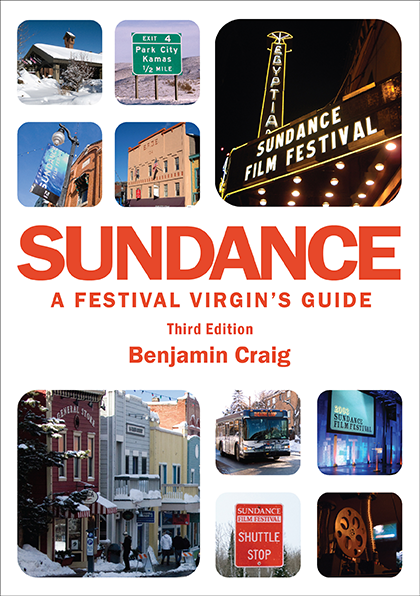History of the Sundance Film Festival (Part 4)
By Benjamin Craig
< Back to Part 2: Encore, Please!
One Film Festival, Slightly Used, Needs Good Home
In 1985, salvation came from amongst the festival's own, so to speak, as the event moved under the wing of the fledgling Sundance Institute for the first time. Several years before, in late 1979, many festival staff members and film associates had joined Robert Redford at his ranch to take part in a planning meeting to lay the foundations for what became the Sundance Institute. The two organisations had a natural connection from the start so the case for Sundance taking over management of the festival seemed to be persuasive for all concerned. From the Institute's point of view, one of its key initiatives was to develop new outlets for independent films and running a high-profile festival was clearly a powerful weapon to add to its arsenal. From the Festival's point of view, it made sense to be part of an organisation which could provide year-round staffing, financial backing, and an extensive network of contacts.
To help move the two organisations toward this holy matrimony, Utah Film Commissioner John Earle and festival program director Lory Smith convinced Sterling van Wagenen (at that point the Institute's executive director) that it would be in everyone's best interests for Sundance to take over the festival. The festival board was initially lukewarm to the idea, but some impressive statesmanship from Earle and Smith, as well as Van Wagenen securing Redford's support for the decision, ultimately brought the directors around.
Under the stewardship of the Sundance Institute, the 1985 United States Film Festival presented more than 80 features, including, for the first time, a slate of international films. The seventh festival also witnessed the arrival of the first generation of true superstars of the independent film world: the Coen brothers' debut film "Blood Simple" walked away with the Grand Jury Prize, and Jim Jarmusch's "Stranger Than Paradise" impressed the dramatic competition jury enough to earn a Special Jury Prize. Festival attendance in 1985 was also up, doubling the previous year's figures, and as part of the move to a year-round management structure, Van Wagenen appointed Tony Safford, formerly with the National Endowment for the Arts in Washington, as the new festival program director.
As the 1980s marched to a close, the festival continued to enhance its profile and attendance figures with a blend of themed collections, retrospectives, and what had become the premiere forum for independent film in the United States. Between 1986 and 1988, around 200 feature films were screened, including Woody Allen's "Hannah and Her Sisters" (1986); Tim Hunter's classic film with a young Keanu Reeves, "River's Edge" (1987); an early Robin Williams dramatic effort, "Seize the Day" (1987); Lizzie Borden's "Working Girls" (1987); cult French film "Betty Blue" (1987); and John Waters' "Hairspray" (1988). But it was 1989 that proved to be a major turning point for the festival.
Did Someone Order an Explosion?
Since the inaugural Utah/US Film Festival in 1978, the press attention focused on the event had increased exponentially every year. In 1989 the pressure on the festival to play breakout films was more intense than ever and ironically, it was a former festival bus driver who ended up giving the press what they craved. In 1988, Steven Soderbergh spent two weeks in Park City ferrying festivalgoers around town as a volunteer driver. Returning in 1989 with his debut film "sex, lies and videotape", he not only won the inaugural Audience Award but sparked a studio bidding war and hype machine that eventually earned the film over $25 million at the US box office and in the process, cemented the festival’s reputation as an essential calendar date for the US film industry. If the press wanted 'break-out', they weren’t disappointed.
But the success of "sex, lies and videotape" wasn't the only highlight in 1989. With 65 other feature films, including Michael Lehmann's "Heathers", Martin Donovan's "Apartment Zero", and Nancy Savoca's "True Love", which won the Grand Jury Prize, as well as a 15-film tribute to John Cassavetes and a centennial celebration of the work of Charlie Chaplin, the 1989 event offered a host of treats for festivalgoers.
Get Your Copy Now

The essential handbook for filmmakers, film fans, and film industry professionals looking to attend the Sundance Film Festival. Available in paperback and digital formats.
Find Out More >
